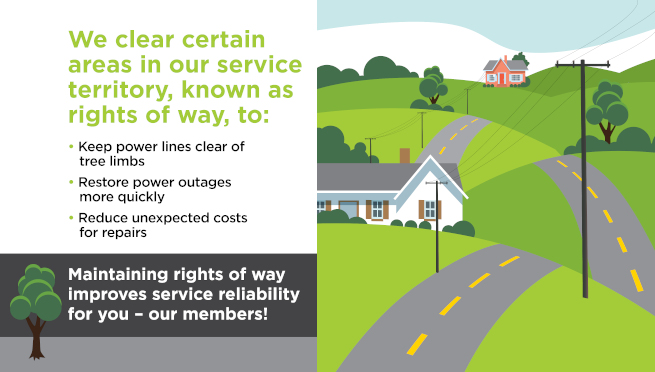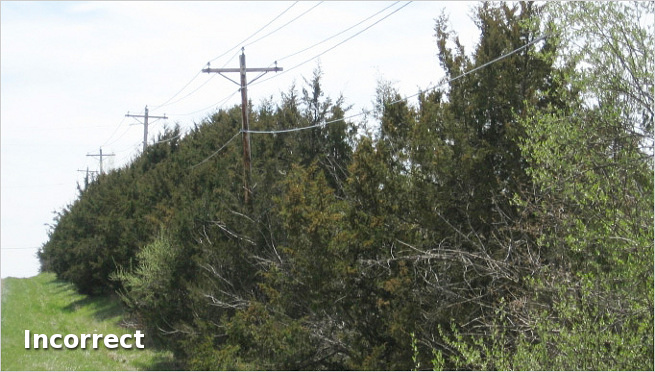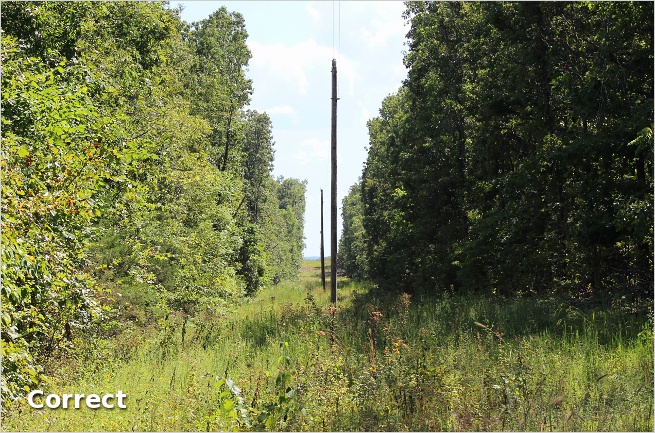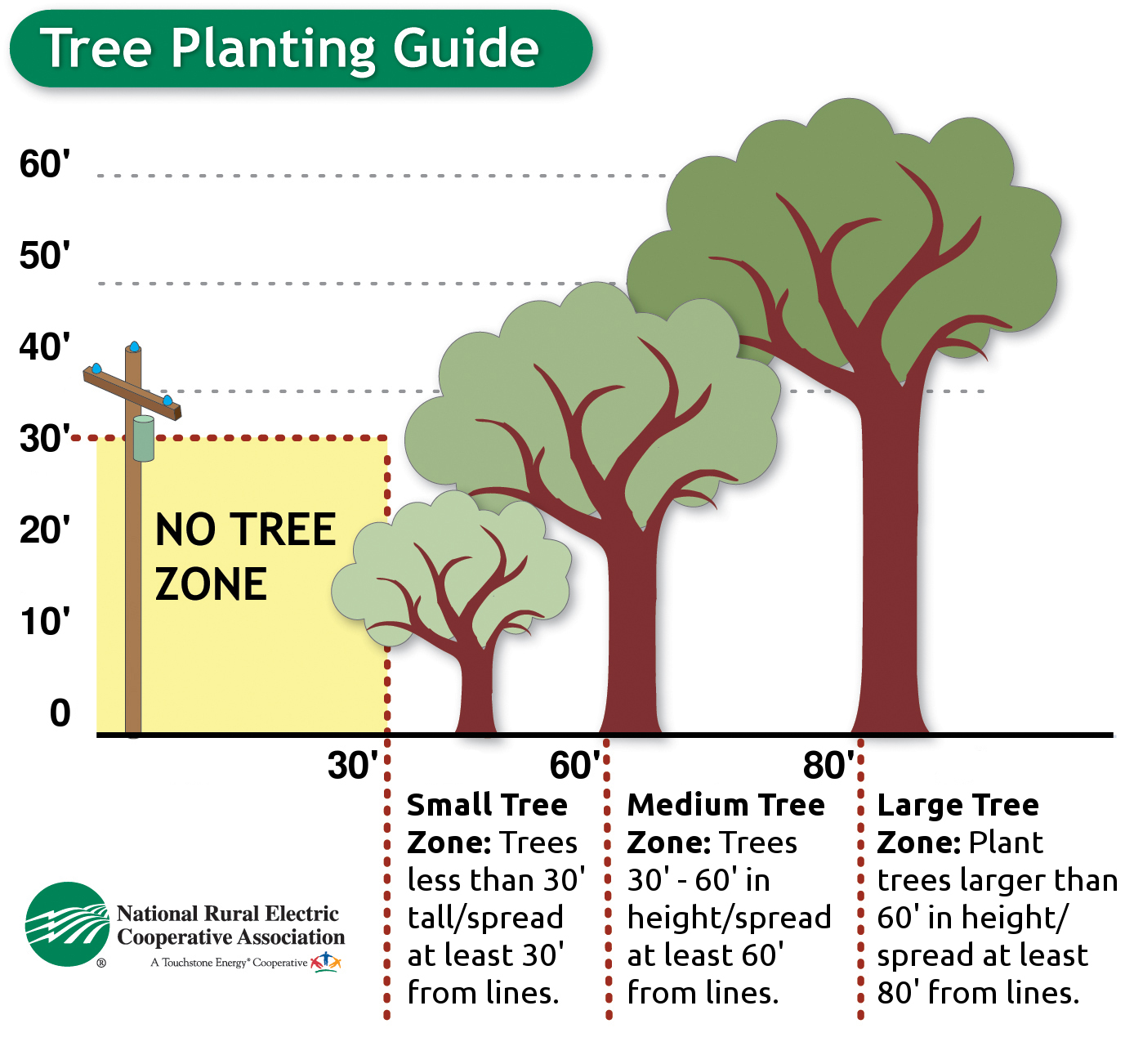
An effective tree-trimming program for areas near power lines is crucial to Howell-Oregon Electric Cooperative's mission of delivering cost efficient, reliable energy to you, our members.
Larger trees that are planted around utility easements (a.k.a. "right of way") create a dangerous safety hazard by providing children an opportunity to play near power lines. When a tree limb comes in contact with a power line, there is a risk of shock injury or fatal electrocution to a child or adult touching or climbing the tree.
Trees located in a utility right of way increase the chance of an outage or blinking lights, and will also increase the time it takes to restore power after a major storm, as trees can damage power lines and poles during high winds or lightning.
Trees near power lines also increase maintenance costs. If our maintenance crews can’t see down the right of way, they must hunt among the branches to locate the problem, which is extremely time-consuming and dangerous.


In this photo, trees and brush have been cleared to allow sufficient right of way clearance on either side of the power lines.
If you see trees on your property that are too close to power lines, please call HOEC at (417) 256-2131 or toll-free 1-888-HOE-POWER, or you may e-mail us: 
Tree Planting Tips
Nothing adds beauty and value to a home like trees. Besides offering significant energy savings by providing summer shade and winter protection, trees help absorb noise, provide privacy, freshen and replenish the atmosphere and attract wildlife.
When deciduous trees (those that lose their leaves in autumn) are planted on the west and southwest sides of the house, they shade roof and wall surfaces in summer and provide natural air conditioning in your house. In the winter, the bare branches will let most of the sunshine through to warm the house.
A windbreak of evergreens planted on the north and west sides of your house can help achieve energy savings during the winter. The correct foundation plantings around the base of your house can create a dead air space that will help insulate your home, thus making it more energy efficient.
When planting trees, be sure to plan for fully mature size of the trees. Place trees so that the branches, when fully grown, will not make contact with your house and will be at least 30 feet away from all power lines and poles.
